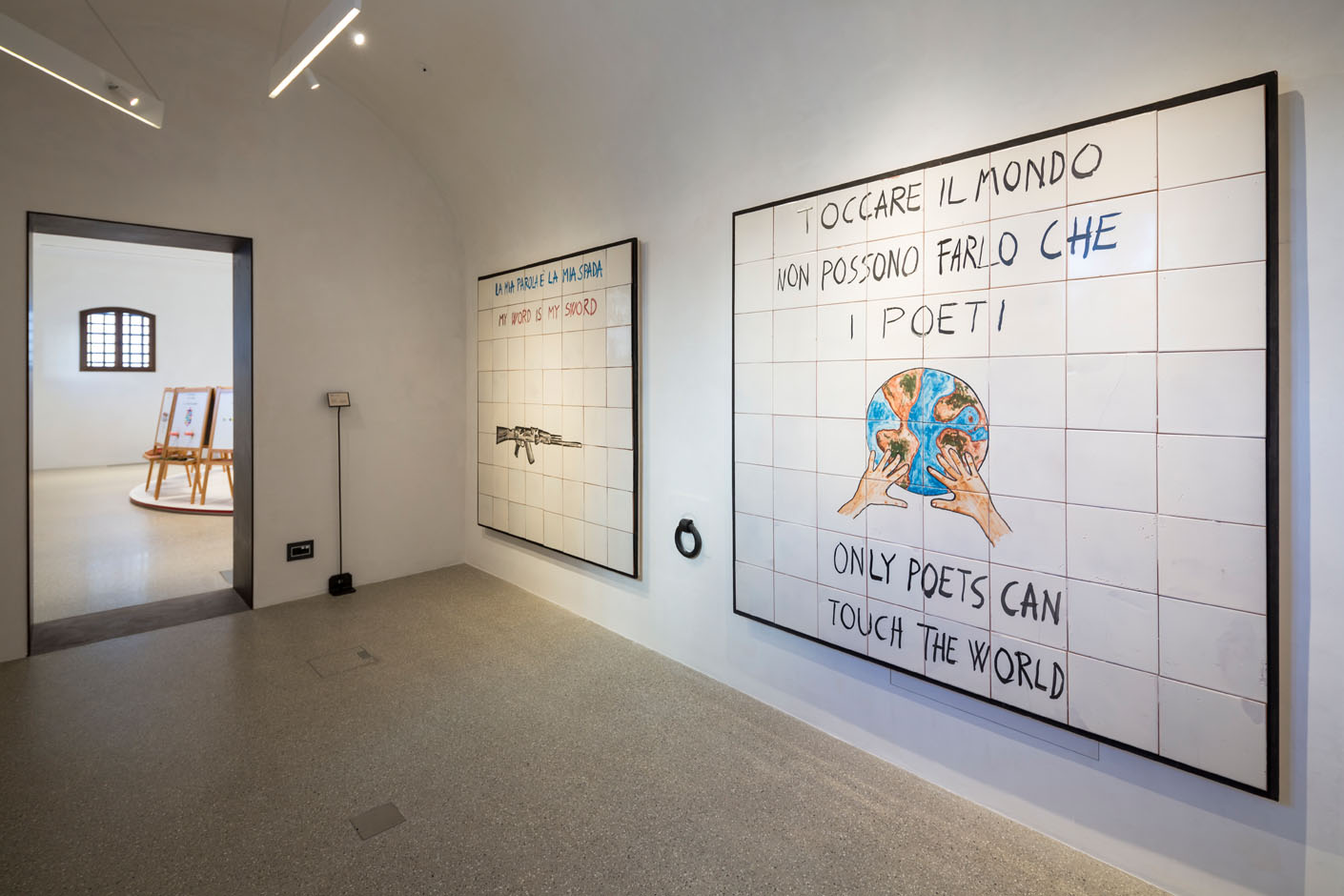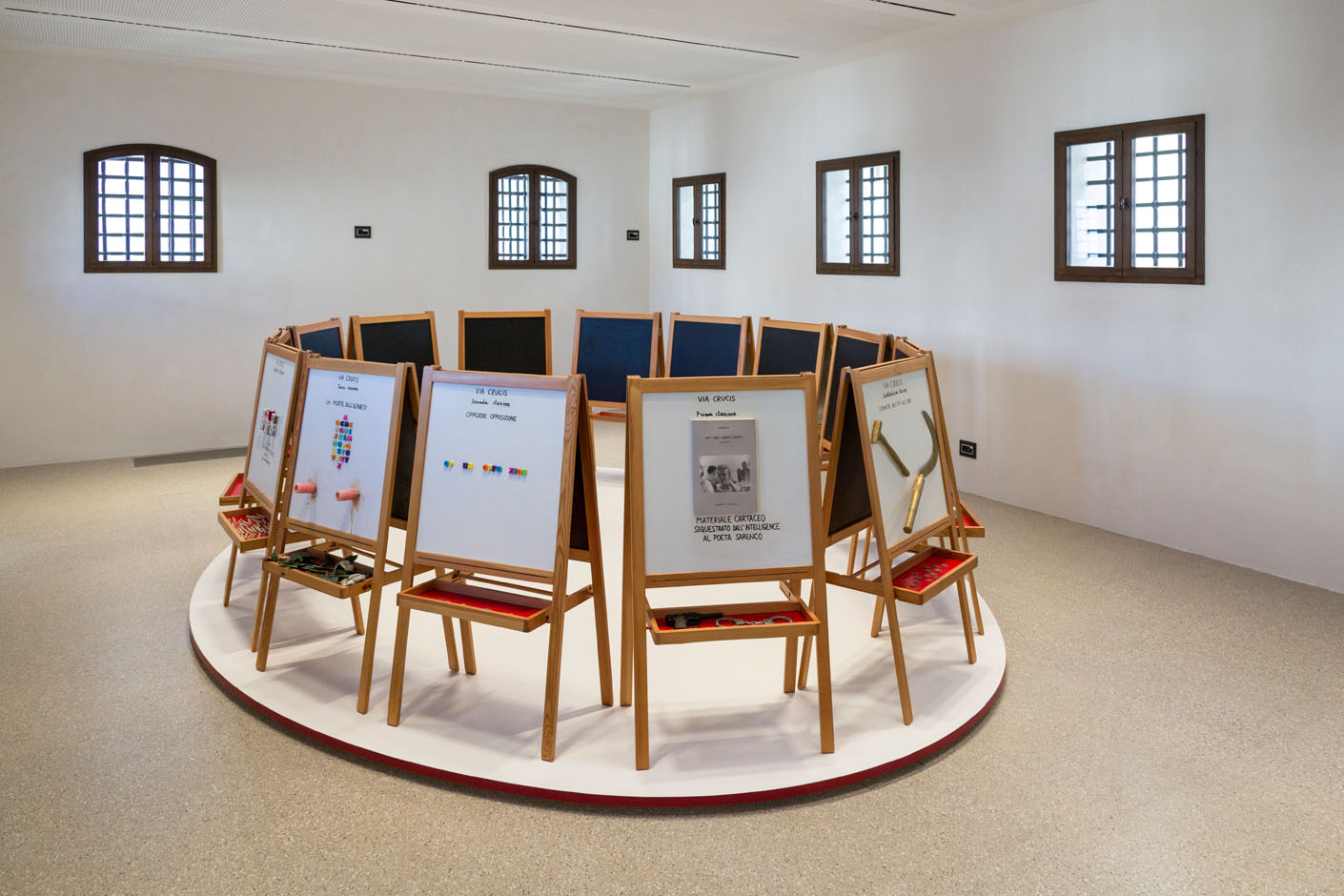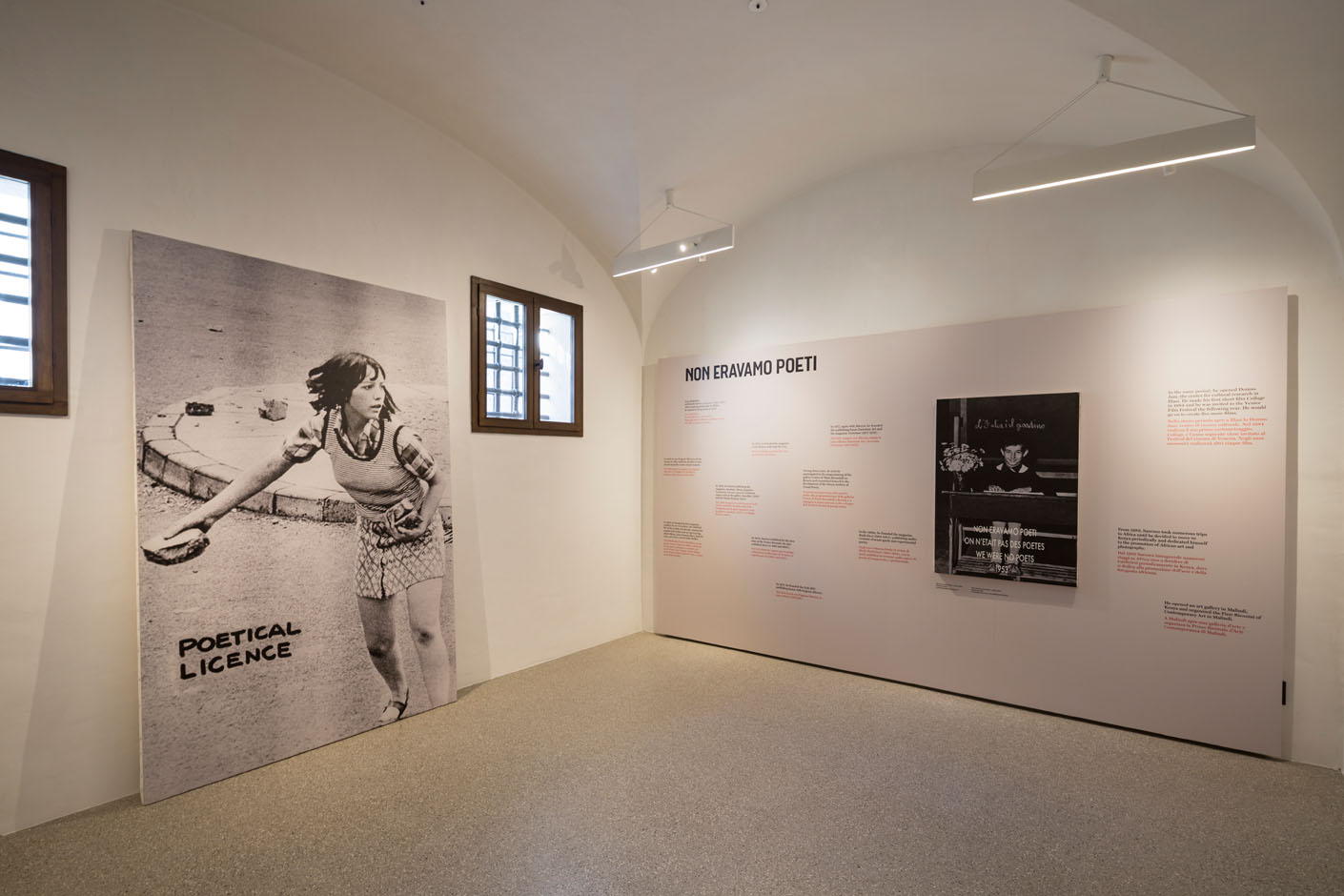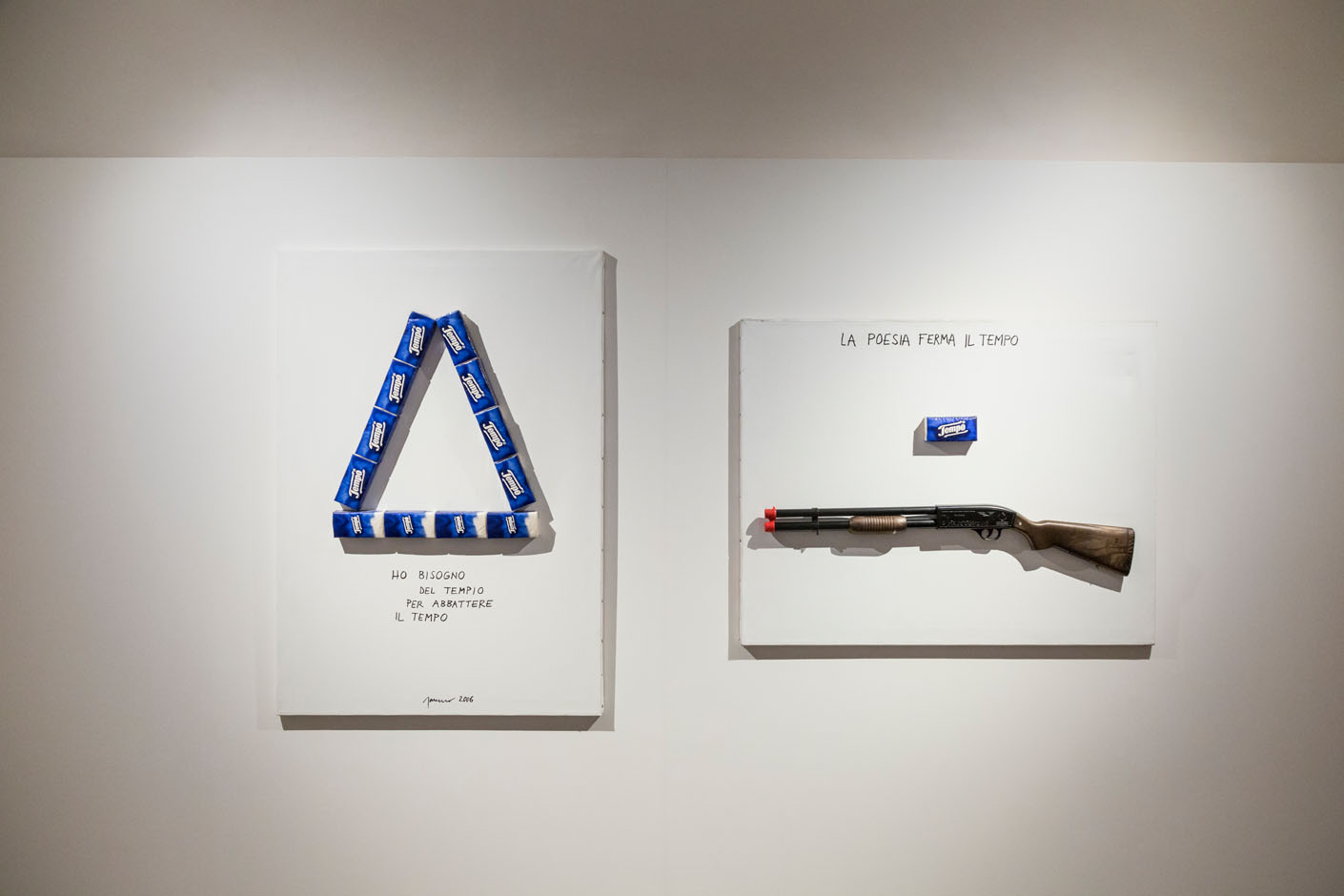Artist
Sarenco
Non eravamo poeti
1973-2014, Print on canvas. Courtesy Fondazione Sarenco
Let's Go to School
2003, Mixed technique. Courtesy Fondazione Sarenco
Le ceramiche di Siviglia
2004, Painting on ceramic on wood. Courtesy Fondazione Sarenco
La poesia ferma il tempo
2005, Acrylic and collage on canvas. Courtesy Fondazione Sarenco
Ho bisogno del tempio per abbattere il tempo
2006, Acrylic and collage on canvas. Courtesy Fondazione Sarenco
TO DISCOVER MORE
BACK TO THE EXHIBITION
Poetic Boom Boom exhibits some of the most important works produced by Sarenco. Poetical Licence, the iconic photo randomly taken by the artist during a moment of scuffles in Belfast and illustrates the radical tension in which visual poetry must have. The poetic license that Sarenco allows himself to take transforms the visual poet into an activist who contributes to the political struggle by improving the society in which he lives through creativity.
In the photograph Non eravamo poeti (We were not poets), Sarenco – portrayed as a child on school desks – declares his conflicting relationship with poetry. While in the most recent series Le ceramiche di Siviglia (Seville’s ceramics), produced in 2004 for the Seville Biennial, as well as Ho bisogno del tempio per abbattere il tempo (I need time the temple in order to destroy time) and La poesia ferma il tempo (Poetry stops the time), involve epigrammatic phrases about poetry and time. Let’s Go to School is an installation of 14 boards, the same number of the stations of the via crucis, that Sarenco transforms into stops for ironic and desecrating reflections.
Isaia Mabellini (1945-2017), artistically known as Sarenco, was a visual poet, performer, director, publisher and exhibition organizer. As one of the most multi-faceted, active and exuberant characters of the Italian panorama of visual poetry, as early as 1963 he began to make his first contact with other visual poets and with Group 70 of Miccini and Pignotti. During this time he elaborated caustic and scratchy epigrams to promote his political and cultural struggle. He founded the magazines “Amodulo” (1968) and “Lotta Poetica” which he published in four periods (1971-1975, 1982-1984, 1987 and 2009) and the publishing houses Edizioni Amodulo (1969), SAR.MIC with Miccini (1972) and Factotum Art with De Vree (1977). He founded the International Group of Visual Poetry (or Group of Nine) in 1972 and the Logomotives in 1983. From 1982 he made numerous trips to Africa, where he opened galleries and founded the Malindi Biennale (2006). He also experimented with cinema: his first screenplay, “Collage”, was presented in 1985 at the Venice Film Festival. He participated in four editions of the Venice Biennale (1972, 1986, 2001 and 2011), at documenta in Kassel (1972) and at the Seville Biennale (2004).






























